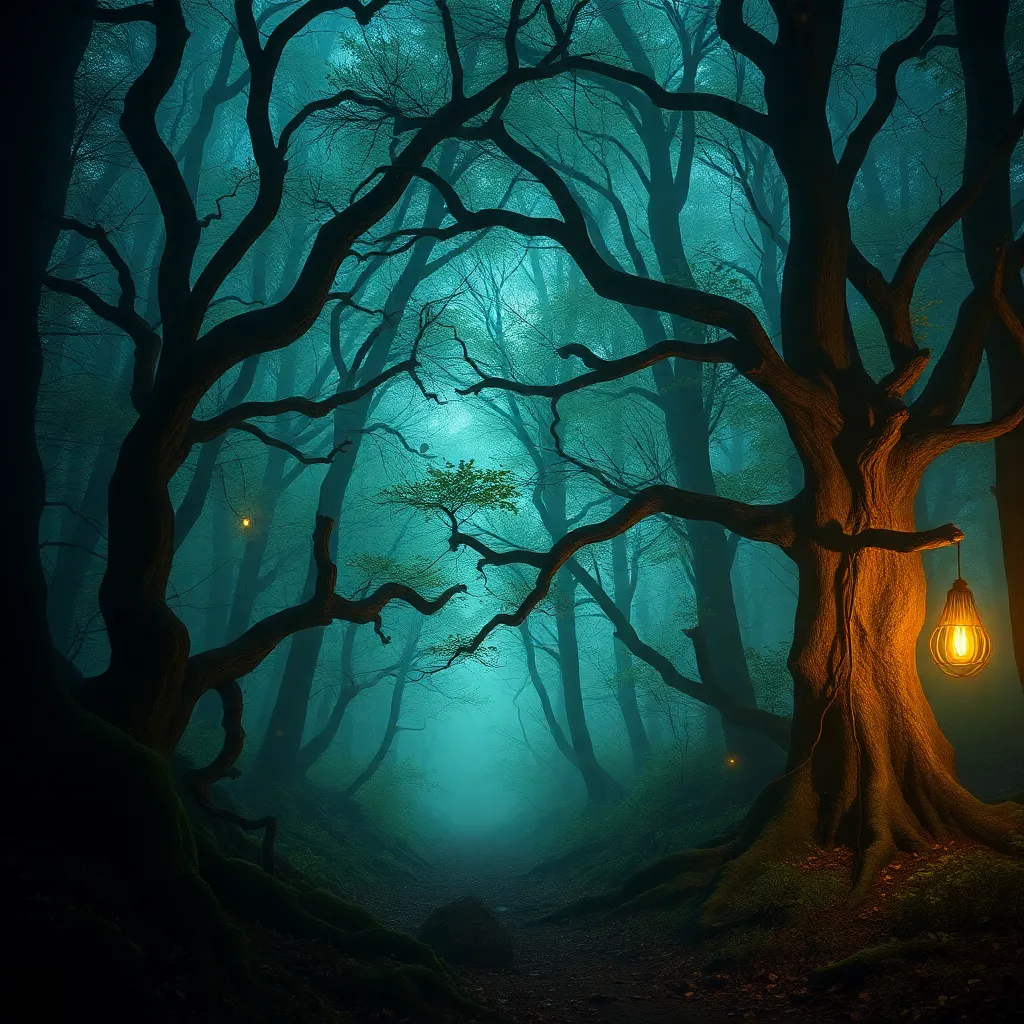The Dryad’s Song: Exploring the Music of the Forest
I. Introduction to the Dryad’s Song
The concept of Dryads finds its roots in ancient mythology, specifically in Greek lore, where they are depicted as tree spirits or nymphs. These ethereal beings are said to inhabit and protect forests, embodying the very essence of nature. Dryads symbolize the interconnectedness of life and the environment, often represented as guardians of trees.
Music plays an essential role in forest ecosystems, serving not only as a form of communication among wildlife but also as a medium through which humans can connect with nature. The sounds of the forest—be it the rustling of leaves, the songs of birds, or the gentle flow of a stream—create an auditory landscape that enriches the experience of being in nature.
This article aims to explore the profound relationship between the Dryad’s song and the music of the forest, delving into its mythological roots, the sounds that comprise this natural symphony, and the impact of music on both wildlife and human well-being.
II. The Mythological Roots of the Dryad’s Song
Dryads have been celebrated in folklore throughout history. These enchanting beings are often portrayed as beautiful maidens who are intimately connected to their respective trees. The loss of a tree could mean the loss of a Dryad, symbolizing the fragility of nature and the importance of environmental stewardship.
In many ancient cultures, trees were revered as sacred entities, representing life, growth, and wisdom. For instance, in Norse mythology, the Yggdrasil tree connects the nine worlds, embodying the axis of the universe. Similarly, in Celtic traditions, trees such as the oak and yew were thought to possess mystical properties.
The connection between music and the natural world has been emphasized in various cultures, where songs were created to honor trees and the spirits dwelling within them. These melodies often mimic the sounds of nature, reinforcing the idea that music is an integral part of the forest’s ecosystem.
III. The Sounds of the Forest: Nature’s Symphony
The forest is alive with sounds that create a rich tapestry of auditory experiences. Identifying these sounds can deepen our appreciation for the natural world.
A. Identifying the various sounds found in forests
- Animal calls and their musicality: Birds, insects, and mammals each contribute unique sounds. For instance, the melodic songs of warblers and the rhythmic drumming of woodpeckers create a dynamic soundscape.
- Natural elements: The wind whispering through leaves, the gentle burble of a stream, and the rustling of branches all add layers to the forest’s symphony.
Biodiversity plays a crucial role in shaping this auditory experience. A forest rich in species diversity tends to produce a more complex and harmonious soundscape, enhancing the overall experience for both wildlife and visitors.
IV. The Influence of Music on Forest Ecosystems
Sound has a profound effect on wildlife behavior, influencing feeding, mating, and territoriality. Various studies have shown that different sounds can either attract or repel certain species, highlighting the importance of auditory cues in the animal kingdom.
Conversely, human-generated sounds, such as machinery, traffic, and loud music, can disrupt natural habitats, leading to stress and changes in behavior for many forest-dwelling species. Noise pollution poses a significant threat to wildlife, making it essential to consider sound in conservation efforts.
Music has also been utilized in conservation efforts, where artists collaborate with environmental organizations to raise awareness of the need to protect natural soundscapes. By bringing attention to the beauty of forest music, these initiatives aim to foster a deeper appreciation for nature.
V. Traditional and Cultural Interpretations of Forest Music
Throughout history, various cultures have drawn inspiration from the sounds of the forest to create music that reflects their connection to nature.
A. Folk music inspired by forest sounds
Folk traditions often incorporate melodies that mimic the sounds of birds or the rustle of leaves, celebrating the beauty of the natural world. Instruments such as flutes, drums, and strings are frequently used to echo these natural sounds.
B. The use of instruments made from natural materials
Many indigenous cultures have crafted instruments from materials found in their environment, such as wooden flutes and drums made from animal skins. These instruments not only produce unique sounds but also reflect a deep respect for the forest.
C. Rituals and practices that celebrate the music of the forest
Rituals often include singing and dancing, creating a communal experience that honors the forest’s spirit. Seasonal festivals celebrate the changing sounds of nature, allowing communities to connect with their environment.
VI. Modern Innovations: Technology and Forest Music
With advancements in technology, we are now able to capture and study forest sounds in unprecedented ways. Recording technology allows us to document the intricate symphony of the forest, providing valuable data for research and conservation.
A. The use of recording technology to capture forest sounds
High-quality recording equipment enables scientists to analyze animal calls, monitor biodiversity, and assess the impact of human activity on natural soundscapes.
B. Applications of soundscapes in environmental studies
Soundscapes are increasingly used in ecological studies to understand the health of ecosystems. By monitoring changes in the auditory environment, researchers can gain insights into the overall state of the forest.
C. The rise of ambient music inspired by nature
Musicians today are increasingly drawing inspiration from forest sounds to create ambient music that promotes relaxation and mindfulness. This genre often incorporates natural recordings, inviting listeners to immerse themselves in the tranquility of the forest.
VII. The Therapeutic Benefits of Forest Music
The sounds of nature, including the music of the forest, have been shown to have calming effects on mental health. Research indicates that exposure to natural sounds can reduce stress, anxiety, and depression.
A. The calming effects of natural sounds on mental health
Listening to the gentle rustle of leaves or the distant call of a bird can evoke feelings of peace and tranquility, making nature a powerful ally in promoting emotional well-being.
B. Music therapy in forest settings
Music therapy sessions conducted in forest settings harness the healing power of both music and nature. Participants often report feeling more relaxed and connected to their surroundings.
C. The phenomenon of forest bathing and sound immersion
Forest bathing, or “shinrin-yoku,” encourages individuals to immerse themselves in the natural environment. Sound immersion within this context enhances the experience, allowing for deeper relaxation and connection to nature.
VIII. Conclusion: Embracing the Dryad’s Song
Preserving the natural soundscapes of our forests is essential for maintaining biodiversity and fostering a healthy environment. As we strive to protect these vital ecosystems, we must also recognize the importance of music in connecting us with nature.
By exploring and appreciating the music of the forest, we can cultivate a deeper relationship with the natural world. This article serves as a call to action for readers to venture into the woods, listen intently, and celebrate the enchanting symphony that the Dryad’s song represents.




